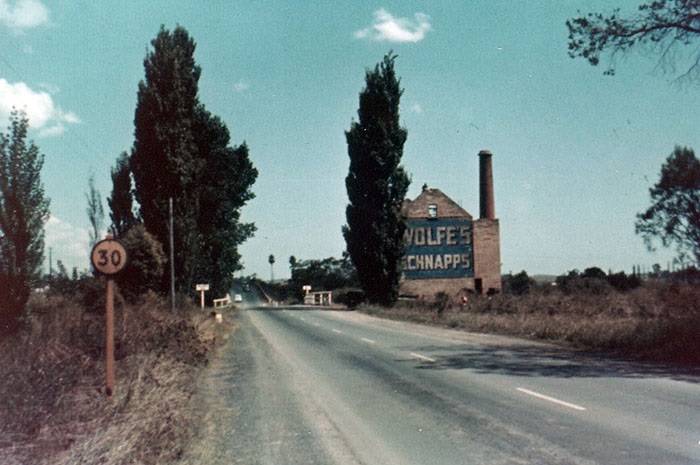History of Bow Bowing
How would you like to live in a suburb called "Saggart Field"? An ear-pleasing title it is not! But it was the name originally proposed for Bow Bowing.
Campbelltown Council chose it back in 1975 when plans for the suburb were first being placed on the drawing board. "Saggart Field" was designed to honour a small community of farmers that had lived on the site in the mid-19th Century. This community - established long before nearby Minto - was known by its name because the Saggart family lived in a large red wooden house on the top of a hill overlooking the area. But as a suggested suburb name, it was met only by looks of horror from residents and aldermen. Noting the protests, Council decided instead to use the name "Bow Bowing", in recognition of the Creek which flowed past the site.
Parish maps show the earliest landholders in the area were Joseph Inch, D. Keighran and John Pendergast. It was the Pendergast family that donated a block of land on the corner of Campbelltown Road and Redfern Road to the Catholic Church. In June 1866 a small church classroom - built by local farmers - was opened at the site and called Saggart Field School. But a lack of funding made conditions very spartan and the first teacher, Nanno Clark, lived in virtual poverty. Moves to improve this situation were made by converting the church school into a public one. And despite the opposition of some Catholic families in the area, parish priest John Paul Roche supported the tactic and it succeeded. So in 1867, the little wooden hut became the first public school in Campbelltown. A visiting inspector described Saggart Field as "a small agricultural settlement" - but the local name did not benefit from great longevity. Particularly as the Saggart family had moved away from the district.

The now demolished Keighran's Mill on Bow Bowing Creek looking along Campbelltown Road circa 1960
By May 1884, the school had changed its name to Minto Public School, and in 1954 it was relocated to the more populated eastern side of the railway line, where it still stands on the corner of Redfern and Pembroke Roads. Students and teachers are very proud of their school's rich heritage and maintain a little museum.
Today, the only visual reminder of the old settlement name is Saggart Field Road in the Minto industrial area. By naming the planned suburb "Bow Bowing" in 1975, Council was paying tribute to one of its city's best-known waterways. Although its original course has changed greatly since the 1970s with the construction of wide concrete canals.
The exact origin of the Bow Bowing name is obscure. But according to an early land grant (located near the creek's headwaters near Glen Alpine), it was originally spelt as "Boro Borang", possibly an Aboriginal term. But through careless writers of old deeds, the name appears to have been corrupted over the years to firstly Boro Bowing, and then Bow Bowing.
The NSW Geographical Names Board approved the suburb name in May 1976 - although the area was, of course, still grassy hills. Four months later, the Housing Commission announced it was planning to build there. Referring to its proposed estate as "Bowing", the Commission proposed to squeeze more than 1050 dwellings onto the site - mostly in the form of townhouses. But this stirred vocal protests.
One of the most substantial criticisms was that too many Housing Commission estates had already been built in areas physically separated from the rest of the community. "This trend will continue with the new bowing Estate, hemmed in by Campbelltown Road on one side and by Bow Bowing Creek on the other," the Campbelltown-Ingleburn News reported in March 1980. The Bowing estate was indefinitely shelved, and in the late 1980s the Liberal State Government sold the land to private developers. In July 1990, Premier Nick Greiner officially opened Bow Bowing Estate, established by Long Homes and planned to incorporate 350 homes - far fewer than the 1055 planned by the Commission.
Council had decided as early as 1976 to name streets in the planned suburb after people involved in the wheat industry. But in June 1989, the estate developers lobbied Council to adopt a different theme. As the housing development was being marketed as Bow Bowing Park, Long Homes requested streets be called after famous parks around the world.
The list it submitted included England's Kensington Gardens and Birkenhead Park, Central Park and Yellowstone Park in the United States, and the Tivoli Gardens in Denmark. Also Russia's Gorky Park, Japan's Sankei Gardens and Spain's Campo Del Moro. However, while the aldermen agreed to a "park" theme, they rejected the international idea. Instead, a list of Australian parks was compiled. By 1995, most of the estate was complete. And many of the streets noted NSW reserves including Kosciusko National Park (NP), Warrumbungle NP, Dorrigo State Park, Ku-ring-gai Chase NP, Kinchega NP, Angourie NP and Nadgee NP.
Queensland national parks are noted by Carnarvon Road and Jowarra Place, while those in South Australia are recalled by Belair Street and Kyeema Place. Also noted is Wyperfeld NP in Victoria and Lyell Highway Reserve in Tasmania. National Parks in Western Australia include Nambung, Hamersley Range, Kalbarri and Tathra.
The Northern Territory is not forgotten either, with its Cobourg Peninsula Sanctuary, Tanami Desert Sanctuary and Woolwong Sanctuary. Although the proposal to use international park names was scrapped, the estate developers did make a special request to utilise the title of New York's famous patch of green. Council agreed. And hence, the main road through the suburb is now called Central Park Drive.
"Campbelltown's Streets and Suburbs - How and why they got their names" written by Jeff McGill, Verlie Fowler and Keith Richardson, 1995, published by Campbelltown and Airds Historical Society.
Reproduced with permission of the authors.